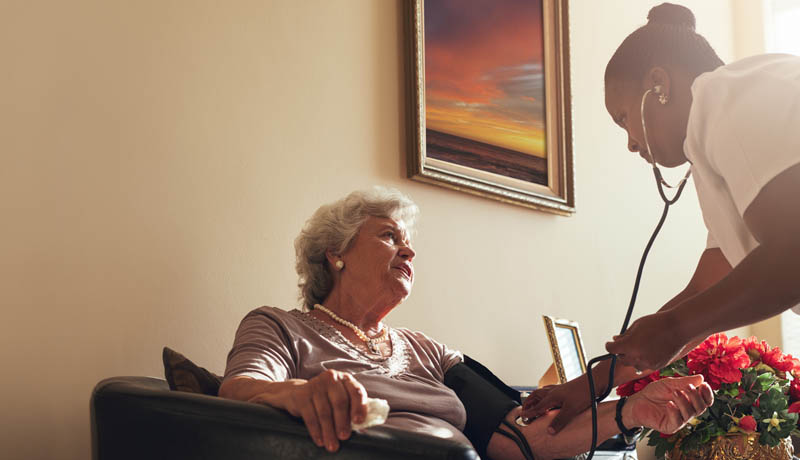Home-based healthcare, which can involve both in-home services and telehealth or telemedicine, is a rapidly growing field that is transforming the way healthcare is delivered. With the rise of technology and the increasing demand for more convenient and accessible healthcare options, home-based healthcare is becoming aviable alternative to traditional in-person healthcare.
The pandemic brought with it the added risk of receiving healthcare in facilities where large numbers of infected people were congregating. The shift to home-based healthcare was an effective abatement strategy, but it brought new challenges in how people’s healthcare could be managed outside of the traditional hospital or clinic setting.
One of the biggest advantages of home-based healthcare is the ability to access medical care from the comfort of your own home. This can be particularly beneficial for individuals who have mobility issues, compromised immunity or live in rural areas where access to healthcare facilities may be limited. With telehealth, patients can
receive medical care from a healthcare provider remotely, using a smartphone, computer, or other device with internet access.
Another advantage of home-based healthcare is the potential to reduce healthcare costs. By reducing the need for patients to travel to a healthcare facility, telehealth can help to save on transportation costs and other expenses associated with in- person healthcare. In addition, telehealth can potentially reduce the need for hospitalizations and other costly medical procedures by providing patients with access to timely and effective care.
“With its many advantages, including convenience, cost savings, and improved access to care, telehealth and in-home care delivered by professionals is becoming an increasingly popular option for patients and healthcare providers alike.”
One of the major challenges of home-based healthcare is ensuring the quality and safety of care. To address this issue, healthcare providers are increasingly using secure, HIPAA-compliant technology to ensure the privacy and security of patient data. In addition, many telehealth services are now required to meet the same standards of care as in-person healthcare, so patients can expect to receive the same level of care from a telehealth provider as they would from a traditional healthcare provider.
Security of data is a big concern, but that is not the only aspect of remote medical care that needs to be considered. Community health providers can only do so much for an individual through an in-home setting. For example, some providers have been delivering services like dialysis at people’s homes.
Although some patients appreciate some aspects of the convenience of getting dialysis at home, it can impose significant extra work on other caregivers in the home. The work that was being done by the staff at a dialysis center, for instance, can unfortunately be shifted to members of the household. This scenario can work where
there are other family members who can play a supportive role to the dialysis recipient, but here are many older adults who are socially isolated and don’t have significant social support. Another issue comes with a lack of safe storage for medical equipment and supplies in dwelling that don’t have the extra room.
It’s far more complicated than just moving medical care into the home; In many cases, home-based care models substitute a facility-based doctor or a nurse-practitioner with a lesser-trained home-based clinician. The training level of the home-based clinician may be misaligned with the complexity of a patient’s needs.
Another challenge of home-based healthcare is overcoming the skepticism of some patients and healthcare providers who may be hesitant or challenged by the technology needed to use telehealth services. To address this, healthcare providers are working to educate patients and providers about the benefits of telehealth and to
dispel any misconceptions about the safety and effectiveness of home-based healthcare.
As the shift to in-home services continues to evolve, there will be a need to continue evaluating the outcomes of these patient interactions. Healthcare professionals will need to assess data that comes from both in-clinic setting and from patients who are being consulted or treated outside of the hospital or clinic environment.
Home-based healthcare is a rapidly evolving field that is transforming the way healthcare is delivered. With its many advantages, including convenience, cost savings, and improved access to care, telehealth and in-home care delivered by professionals is becoming an increasingly popular option for patients and healthcare providers alike. As the field continues to grow and advance, it is likely that home-based healthcare will become an even more integral part of the healthcare system, but will require new management methods to deliver and track outcomes going forward.
Contact us for more Info.



